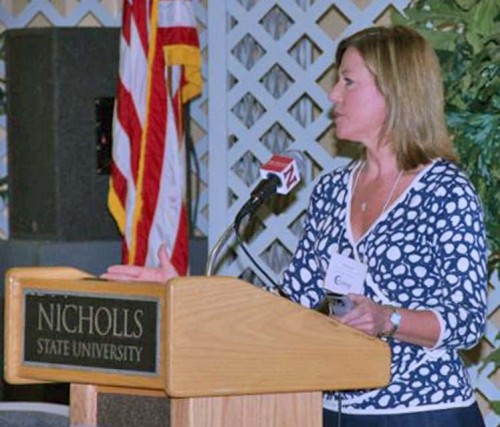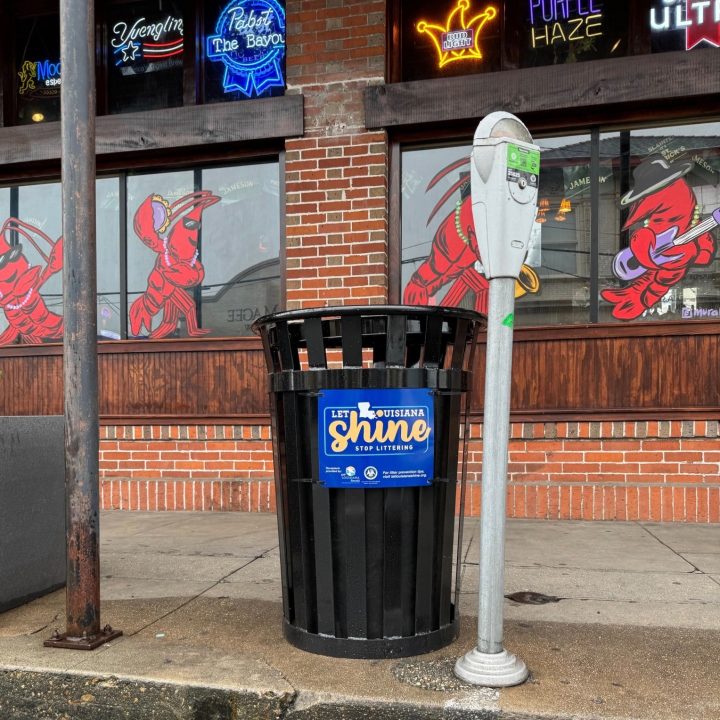
Gerald Anthony Guidry
July 28, 2009
Florett "Flo" Johnson
July 30, 2009Louisiana had 943 vehicle crashes resulting in fatalities in 2007 and many of those involved distracted drivers and unbelted occupants, according to speakers addressing a traffic safety conference in Thibodaux last week.
South central Louisiana has an 80 percent seatbelt usage rate, which is 5 percent higher than the rate statewide, said Jamie Ainsworth with the Louisiana Highway Safety Commission.
Ainsworth credited the higher seatbelt usage rate partly to the work of South Central Planning and Development Commission’s South Central Safe Community Task Force, which sponsored the conference.
Beth Inbau, CEO of the National Safety Council’s South Louisiana Chapter, said people make wrong assumptions about many traffic safety issues.
“Twenty years ago, people said, ‘You can’t make me wear a seatbelt,'” Inbau said.
The National Safety Council’s most recent focus has been on wireless devices. The council garnered attention this year by calling for a ban on driving while using cell phones.
Inbau said driver usage of cell phones doubles the risk of being involved in rear-end collisions and increases the possibility of running red lights.
Eating fast food and applying cosmetics in cars are not as pervasive among drivers, she said, so the National Safety Council has not emphasized their danger as much. However, those activities can be just as risky as using a cell phone while driving.
Cell phone use removes part of the driver’s cognitive function, she said. Five states have banned hand-held cell phone use by drivers. Hands-free phones are no better because the brain is still being distracted.
Inbau said a driver chatting with passengers does not pose the same risk as talking on a cell phone. Unlike the person on the other end of the phone, a passenger can gauge traffic situations and respond appropriately.
Personal grooming and daydreaming are two other activities the council discourages while driving.
Inbau offered suggestions for appropriate cell phone usage in cars. Drivers should pull off the road to a safe place if cell phones must be used, such as to make emergency calls. Co-workers should be told that cell phone calls will not be answered while driving.
Bridget Gardner, program director for the Louisiana Passenger Safety Task Force, said seatbelts help to keep occupants inside vehicles during crashes. Many people have the wrong belief, she said, that ejection from a vehicle during a crash is less risky than being buckled in.
Gardner said children are more vulnerable to injury from crashes because they have larger heads, proportionally, and softer skull bones than adults. Cars are designed for adults, as well.
Rear-facing child seats are more effective than front-facing seats because the child does not buckle forward during crashes and air bags are not deployed, which can injure a child.
“Forward-facing child safety seats, even if correctly installed, have a great amount of force for a child,” Gardner said.
But the cost of child safety seats is rising and choosing the appropriate seat from the large variety available can be difficult, she said. Child safety seats have been gone through many recalls also.
Other speakers described programs that deal with roadway areas experiencing a high number of vehicular crashes.
Marie Walsh with the Louisiana Local Technical Assistance Program said 20 percent of traffic fatalities in the state occur on locally-owned roads, a figure that is much lower than most states. In 2007, the state had 48,200 vehicle crashes resulting in injuries.
Walsh said the goal of the Louisiana Strategic Highway Safety program is to cut traffic-related fatalities in the state in half by 2030. The program can be implemented through existing safety plans.
“Know where the fatalities are happening,” Walsh said.
The program is targeting aggressive driving, unbelted vehicle occupants and roadway departures.
Betsey Tramonte, highway safety specialist with the Federal Highway Administration’s Louisiana Division, said the state’s Department of Transportation and Development requires safety assessments of all roadway areas with a high number of crashes.
She said most safety improvements are low cost, such as adding striping.
“When you realize where crashes happen, you can reduce crashes,” Tramonte said.
Marie Walsh, director of Louisiana Local Technical Asistance Program, said 20 percent of traffic fatalities in Louisiana occur on local roads-low compared to other states. * Photo courtesy of SOUTH CENTRAL PLANNING AND DEVELOPMENT COMMISSION










